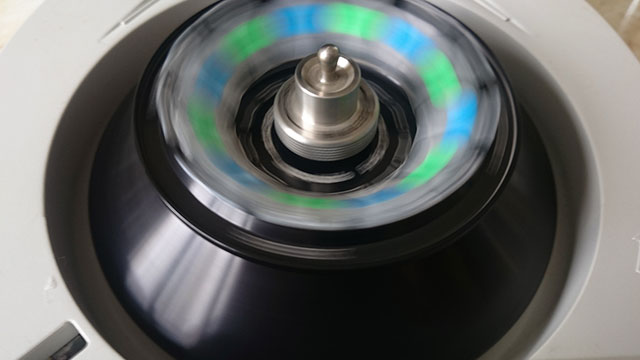What to Consider When Choosing an Ultracentrifuge for Your Lab
With so many highly specialized options available, care must be taken when selecting the right ultracentrifuge for your lab

Ultracentrifugation accomplishes faster separations and higher resolution of similarly sized particles than either standard or high-performance centrifugation. This ultrafast technology is ideally suited to a variety of exciting research applications. But with so many highly specialized options available, care must be taken when selecting the right ultracentrifuge for your lab.
Many uses
“The vast majority of applications that an ultracentrifuge is used for are preparative in nature,” says Phil Hutcherson, global product manager for superspeed and ultracentrifuges at Thermo Fisher Scientific (Waltham, MA). Preparative ultracentrifugation is used to separate and purify small particles for some downstream process.
Hutcherson notes that there are a variety of applications that require preparative ultracentrifugation, from lipoprotein separation to nucleic acid purification and subcellular fractionation. “Modern ultracentrifuges are so advanced that they can also engage in virus particle separation and purification, and have been used in influenza vaccine production,” he says.
One new workflow that Beckman Coulter (Indianapolis, IN) has been focusing on lately is that of exosomes, says Chad Schwartz, the company’s global product manager of analytical ultracentrifugation. These vesicles were once thought to simply contain junk from the cell, but scientists now understand that exosomes are involved in cellular communication, which makes them far more interesting from a research perspective. “Ultracentrifugation is the gold standard method for purifying these exosomes,” he says.
Then there is analytical ultracentrifugation, which is considered an analytical technique because it reveals insights into characteristics like particle size, molecular weight, and stoichiometry. “It’s the exact same box as a preparative ultracentrifuge … the difference is that it’s equipped with optical systems,” Schwartz explains.
Think before you spin
When sifting through all of the ultracentrifuge options available, users would be wise to consider several factors, including rotational speed, rotor type, size, and consumables.
The types of particles being separated will dictate the speed required, says Hutcherson. “If, for example, you need to separate very small particles, then an ultracentrifuge exceeding 100,000 x g will be needed.”
There are several types of rotors that can be used for ultracentrifugation, including fixed angle and swinging bucket, says Stephen Otts, Beckman’s global product manager of ultracentrifugation. While fixed-angle rotors contain openings for tubes at a fixed angle from the central axis, swinging bucket rotors allow tubes to swing outward while they spin.
Ultracentrifuge models come in different sizes. Though larger floor models are common, for labs that are limited on space, Hutcherson suggests that a compact benchtop design might be a better choice.
It is important to think about the consumables available as well. “We have tubes and bottles that support different workflows,” says Otts. Users should consider both how a particular tube will enable them to retrieve their sample and how well the tube is able to withstand high centrifugal forces, he says.
Ultra-advanced technology
Although ultracentrifugation has been a widely used technology for some time, there have been recent innovations. For instance, Thermo Fisher Scientific has developed an alternative to the traditional metal rotors in the form of their Fiberlite carbon fiber rotors.
“The primary cause of failure of conventional rotors is the damage to their metal surface due to moisture, chemicals, or alkaline solutions that weakens the rotor’s structural integrity,” says Hutcherson. The Fiberlite carbon fiber rotors are corrosion-resistant, effectively removing this hazard. They are also designed to be fatigueresistant, whereas high rotational speeds and repeat cycles can cause metal rotors to stretch and distort over time.
Beckman has recently come out with its Optima analytical ultracentrifuge, which provides higher resolution than previous instruments. The new technology also allows for multiwavelength analysis, enabling researchers to study complex systems in a single experiment.
Aware of the fact that a centrifuge of any speed is often a shared resource, Beckman has also introduced their Centrifuge Scheduler Software. With this software, users can schedule their time with the centrifuge and guarantee that no one else jumps the queue. The associated MobileFuge app can also be used to control and monitor centrifuges remotely.
For additional resources on ultracentrifuges, including useful articles and a list of manufacturers, visit www.labmanager.com/centrifuges
